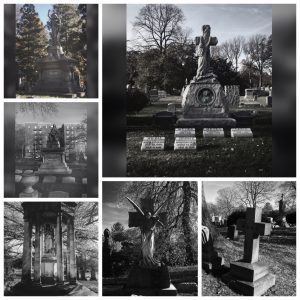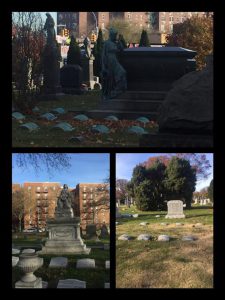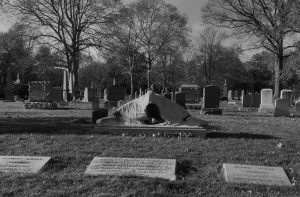 Every tombstone has a story to tell based on its appearance. Some tombstones are placed simply because of a person’s religious beliefs and other tombstones are placed revealing the deceased’s personal experience, the last memories of the deceased, or a creative way of paying tribute to the dead by granting them a tombstone revealing the deceased individuality.
Every tombstone has a story to tell based on its appearance. Some tombstones are placed simply because of a person’s religious beliefs and other tombstones are placed revealing the deceased’s personal experience, the last memories of the deceased, or a creative way of paying tribute to the dead by granting them a tombstone revealing the deceased individuality.

This particular tombstone belongs to a man named Robert Waterman. He was one of the soldiers who was killed in action during the Civil War. Just like this tombstone, many other soldiers are buried right around this very tombstone. The simplicity of this tombstone reveals the very dominant characteristic of the soldier and adjacent to the tombstones is an American flag symbolizing his service to our country.
 Many families brought various lots so the whole family is buried together. One Gothic element about these tombstones is that many of these tombstones has no identification in terms of names or what year the particular the deceased were buried. Some tombstones were simply labeled as “Mother”, “Father”, “Baby”.
Many families brought various lots so the whole family is buried together. One Gothic element about these tombstones is that many of these tombstones has no identification in terms of names or what year the particular the deceased were buried. Some tombstones were simply labeled as “Mother”, “Father”, “Baby”.
This tombstone is the most unique and uncommon tombstone in Greenwood Cemetery. It is called Albert Ross Parsons’ Tomb. Albert Ross Parson was a composer with an Egyptian Obsession. Before his passing, he got a pyramid like tombstone in comparison to an Egyptian king’s burial pyramid. This tombstone is peculiar because it has both Egyptian and Christian iconography inscribed on the structure unlike other tombstones around it.
“IN THEIR LIVES THEY WERE LOVELY AND IN THEIR DEATH THEY WERE NOT DIVIDED.”
Buried under is Charles Schieren who served as Mayor of the City of Brooklyn from 1894 through 1895 along with his wife Marie Louise. They died within the hour of each other from pneumonia and had a double funeral.
Bronze sculpture of Azrael, the Spirit of Death
Azrael, the Spirit of Death, is a striking work that physically captures the dreadful mystery and sorrow of death at the moment when, for believers among Jews and Muslims, “she is the angel who separates the soul from the body.”





Recent Comments